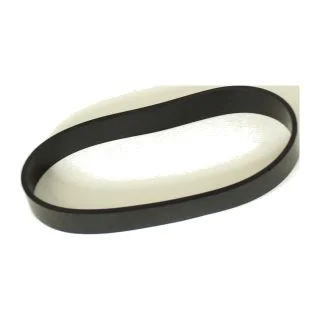Riccar Supralite No Brush Spin Fix
The Hall sensor in Riccar and Simplicity vacuum cleaners monitors the rotation of the brush roll and helps protect the motor by shutting off the vacuum if a jam or obstruction is detected. If your vacuum is shutting off unexpectedly or failing to recognize brush roll movement, the Hall sensor may be faulty and in need of replacement. This step-by-step guide will show you how to replace the Hall sensor and restore proper functionality to your vacuum.
Models this article is relevant to include:
RSL5C R17 R10SAND S10SAND R10P S10P ZM-700 R20S R20UP R20P R20D CMPS-QDZ VIBCBP1 VIBPBP VIBPBP.2 ZM-600 Zoom 600 F3400 F3500 F3500C F3600 F3700 F3700.SAND F3700C S20S S20D S20P S20UP SYMPBP.2 SYMCBP.1
What parts do you need?
We sell high-quality replacement parts to ensure long-lasting and effective repairs! You can also check the schematic page for this vacuum cleaner.
-
Replacement aftermarket belt for Simplicity Freedom And Riccar Supralite R10 and S10 bissell style 1 and 4 pn:…
$6.00Original price was: $6.00.$4.99Current price is: $4.99. Add to cart -
Idler and Hall Sensor Assy for ULW F3700 ZM600
$57.19Original price was: $57.19.$45.09Current price is: $45.09. Add to cart
How do I know when to...
Replace my Riccar Supralite hall sensor?
Brush Roll Doesn't Spin
If the brush roll on your Riccar Supralite isn’t spinning at all—even when the vacuum is powered on—it may indicate a faulty Hall sensor. This sensor is responsible for detecting brush roll movement and can fail over time, leading the machine to disable the brush roll as a safety precaution.
Brush Roll Turns Off
If the brush roll starts spinning and then suddenly shuts off during use, the Hall sensor might be falsely detecting a jam or obstruction. This intermittent behavior is a common sign that the sensor is no longer functioning correctly and may need replacement.
Let's get down to business...
Step-by-Step Repair Guide
Step 1: Confirm the Symptoms
Check if the vacuum powers on, the brush roll spins momentarily, then stops with a red warning light. This indicates the Hall Sensor may not be detecting brush roll rotation properly.
Step 2: Open the Brush Head
Flip the powerhead upside down.
Remove the two screws securing the top cover.
Gently lift the cover to expose the brush roll and belt system.
Step 3: Inspect the Hall Sensor Mechanism
Locate the Hall Sensor next to the belt and brush roll.
Try spinning the brush roll by hand. If the belt moves but the Hall Sensor wheel does not spin freely, it’s likely jammed with debris.
Step 4: Remove and Clean the Hall Sensor
Unplug the Hall Sensor from the wiring harness.
Carefully remove the C-clip that holds the Hall Sensor wheel in place (watch out—it can spring off).
Pull the sensor wheel off the shaft.
Clean out pet hair, debris, or dust inside the housing and around the bearing.
If the bearing still spins well, it doesn’t need replacement.
Optionally apply light grease to the bearing to improve longevity.
Step 5: Reassemble the Hall Sensor
Reinsert the cleaned sensor wheel.
Secure it with the C-clip.
Plug the Hall Sensor back in.
Confirm that spinning the brush roll now also spins the Hall Sensor freely.
Step 6: Test the Sensor
Plug in the vacuum or powerhead.
Power it on and apply pressure to the head (simulating plush carpet) to test sensor responsiveness.
If the brush roll runs without shutting off, the issue is resolved.
You also might need...
Other Items for This Repair
While completing this repair, you should check these other important items on your vacuum cleaner to ensure the best possible performance and longevity!
-
Simplicity Symmetry, Riccar Vibrance Brush Strip single strip
$5.49Original price was: $5.49.$4.39Current price is: $4.39. Add to cart -
Poly V Belt ULW R10P S10P RSL5/C F3700/C ZM-600 S10SAND R10SAND riccar and simplicity
$12.99Original price was: $12.99.$9.99Current price is: $9.99. Add to cart -
Riccar and Simplicity Long Natural Brush Strips for ULW Vacuums
$4.39Original price was: $4.39.$3.29Current price is: $3.29. Add to cart
Final Thoughts
Replacing the Hall Sensor in your Riccar or Simplicity vacuum is a crucial step in restoring proper brush roll detection and maintaining peak performance. Timely maintenance and component replacement not only extend the life of your vacuum but also ensure consistent cleaning results. If you’re unsure about any part of the process, refer to your vacuum’s user manual or consult a qualified technician. With regular care and attention, your vacuum will continue to perform reliably for years to come.
Need More Stuff?
We offer comprehensive part diagrams and repair tutorials to help you keep your vacuum running at its best. VacuumsRus is your one-stop-shop for anything vacuum cleaner related!
Schematics and Parts Diagrams
Schematic and parts list for: Riccar Model: RSL5C
Schematic and parts list for: Riccar Model: R17
Schematic and parts list for: Riccar Model: R10SAND and Simplicity S10SAND
Schematic and parts list for: Riccar Model: R10P and Simplicity model S10P
Schematic and parts list for: CleanMax Model: ZM-700
Schematic and parts list for: Riccar Vibrance Model: R20S
Schematic and parts list for: Riccar Vibrance Model: R20UP
Schematic and parts list for: Riccar Vibrance Model: R20P
Schematic and parts list for: Riccar Vibrance Model: R20D
Schematic and parts list for: CleanMax Model: CMPS-QDZ
Schematic and parts list for: Riccar Vibrance Model: VIBCBP1
Schematic and parts list for: Riccar Vibrance Model: VIBPBP
Schematic and parts list for: Riccar Model: VIBPBP.2
Schematic and parts list for: CleanMax Model: ZM-600 Zoom 600
Parts book and Schematics for Simplicity Models F3400 F3500 F3500C F3600 F3700 F3700.SAND F3700C
Parts book and Schematics for Simplicity Models S20S S20D S20P S20UP
Parts book and Schematics for Simplicity Models SYMPBP.2 SYMCBP.1







